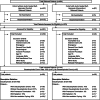Audio-guided self-hypnosis for reduction of claustrophobia during MR imaging: results of an observational 2-group study
- PMID: 33855591
- PMCID: PMC8213599
- DOI: 10.1007/s00330-021-07887-w
Audio-guided self-hypnosis for reduction of claustrophobia during MR imaging: results of an observational 2-group study
Abstract
Objectives: To evaluate the influence of audio-guided self-hypnosis on claustrophobia in a high-risk cohort undergoing magnetic resonance (MR) imaging.
Methods: In this prospective observational 2-group study, 55 patients (69% female, mean age 53.6 ± 13.9) used self-hypnosis directly before imaging. Claustrophobia included premature termination, sedation, and coping actions. The claustrophobia questionnaire (CLQ) was completed before self-hypnosis and after MR imaging. Results were compared to a control cohort of 89 patients examined on the same open MR scanner using logistic regression for multivariate analysis. Furthermore, patients were asked about their preferences for future imaging.
Results: There was significantly fewer claustrophobia in the self-hypnosis group (16%; 9/55), compared with the control group (43%; 38/89; odds ratio .14; p = .001). Self-hypnosis patients also needed less sedation (2% vs 16%; 1/55 vs 14/89; odds ratio .1; p = .008) and non-sedation coping actions (13% vs 28%; 7/55 vs 25/89; odds ratio .3; p = .02). Self-hypnosis did not influence the CLQ results measured before and after MR imaging (p = .79). Self-hypnosis reduced the frequency of claustrophobia in the subgroup of patients above an established CLQ cut-off of .33 from 47% (37/78) to 18% (9/49; p = .002). In the subgroup below the CLQ cut-off of 0.33, there were no significant differences (0% vs 9%, 0/6 vs 1/11; p = 1.0). Most patients (67%; 35/52) preferred self-hypnosis for future MR examinations.
Conclusions: Self-hypnosis reduced claustrophobia in high-risk patients undergoing imaging in an open MR scanner and might reduce the need for sedation and non-sedation coping actions.
Key points: • Forty percent of the patients at high risk for claustrophobia may also experience a claustrophobic event in an open MR scanner. • Self-hypnosis while listening to an audio in the waiting room before the examination may reduce claustrophobic events in over 50% of patients with high risk for claustrophobia. • Self-hypnosis may also reduce the need for sedation and other time-consuming non-sedation coping actions and is preferred by high-risk patients for future examinations.
Keywords: Anxiety; Hypnosis; Magnetic resonance imaging; Phobic disorders.
Conflict of interest statement
The authors of this manuscript declare relationships with the following companies: activities not related to the present article: received institutional grants from Siemens Medical Solutions, GE Healthcare, Toshiba Medical Systems, and Philips Medical Systems
Figures


References
-
- Roguin A, Zviman MM, Meininger GR, et al. Modern pacemaker and implantable cardioverter/defibrillator systems can be magnetic resonance imaging safe: in vitro and in vivo assessment of safety and function at 1.5 T. Circulation. 2004;110:475–482. doi: 10.1161/01.CIR.0000137121.28722.33. - DOI - PMC - PubMed
Publication types
MeSH terms
Grants and funding
LinkOut - more resources
Full Text Sources
Other Literature Sources
Medical

